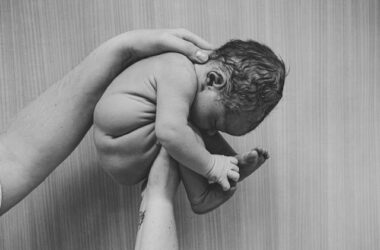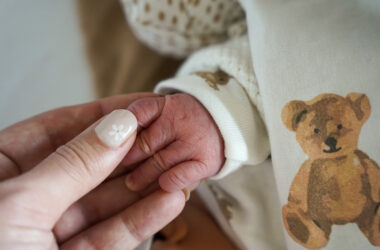Leap 7
Around 41 weeks, the world of sequences is just around the corner. Welcome to leap 7! Between 41 and 47 weeks after the due date, you will notice that your baby will be more inclined to cry or cling and be more cranky than usual; these are the first signs that leap 7 has started.
While your baby mainly studied things by taking or tearing them apart during the previous leap, they will now be rather “constructive” after this leap – and will begin to assemble or “connect” things. Experience the world of sequences together with your baby!
The fussy phase of leap 7: the 3 Cs
The first signals of leap 7 will become apparent around 41 weeks. You will find that your baby is more inclined to cry and cling and be cranky than you would normally expect them to be. Just as during the previous leap, you will now also notice that your baby is shyer, does not want to break body contact with you and wants to be more entertained.
Discover and stimulate your baby's mental development
Download nowAlso typical of this leap is that your baby may sleep less than usual and may also suffer more often from nightmares. Did you know that you can find countless signals in our app to help you recognize the fussy phase of a leap?
The skills phase: ‘constructive’, assembling and ‘connecting’ activities
The fussy phase of leap 7 ends around 46 weeks and the fun phase of the leap begins: the skills phase! Once the ability to perceive and perform ‘sequences‘ breaks through, your baby will suddenly be able to do much more. Your baby is about to realize that they always have to perform every action in a certain order.
For example, they will now begin to look at which things go together and how they fit into each other. So they will try to push them into, next to or on top of each other. Your baby will be more “purposeful” than ever. They know what they’re doing!
Your baby will now also identify and “name” different people, animals or things one after the other. While your baby is not yet able to use literal words, they can “name” things, for example, by saying “da”. If you are doing this activity with your baby, they may point to things and want you to name something. In our app, you will find countless games to boost your baby’s new skills during this leap!
The fun of eating porridge
In the world of “sequences”, your baby learns to recognize and control the flow of events and relationships. Eating porridge with a spoon, for example, means grabbing the spoon, putting the spoon in the porridge, scooping up some porridge on the spoon, moving the spoon to your head and putting it in your mouth (and ideally not into your eye ;)).
TIP: If you let your baby get away with it, they’re going to create an unholy mess. But some protective sheet under the highchair and a lot of patience will prove to be worthwhile investments that pay off time and again.
Discover your baby’s character
Some babies mainly demonstrate motor skills during the leap, while others show in particular their verbal and language skills. Each baby develops in their own way and chooses a skill they would like to develop. And the best part is, that this tells you something about the (future) character of your baby! Did you know that in our app you can not only tick off all the skills of the leap, but also keep track of them in your personal diary?
Have we sparked your curiosity, and do you want to know all about the 10 leaps, the fussy phases and all the skills that go with it? Order the book or download the app right now!
Did this article help you?
Share this article
Receive a notification at the start of a leap!
Would you like to be prepared when your baby is about to enter a leap? Sign up for our leap alarm for free and always receive a notification when a leap is about to start!




